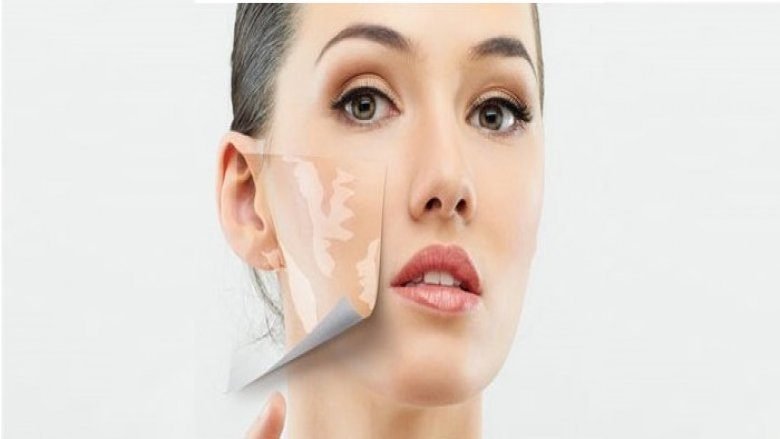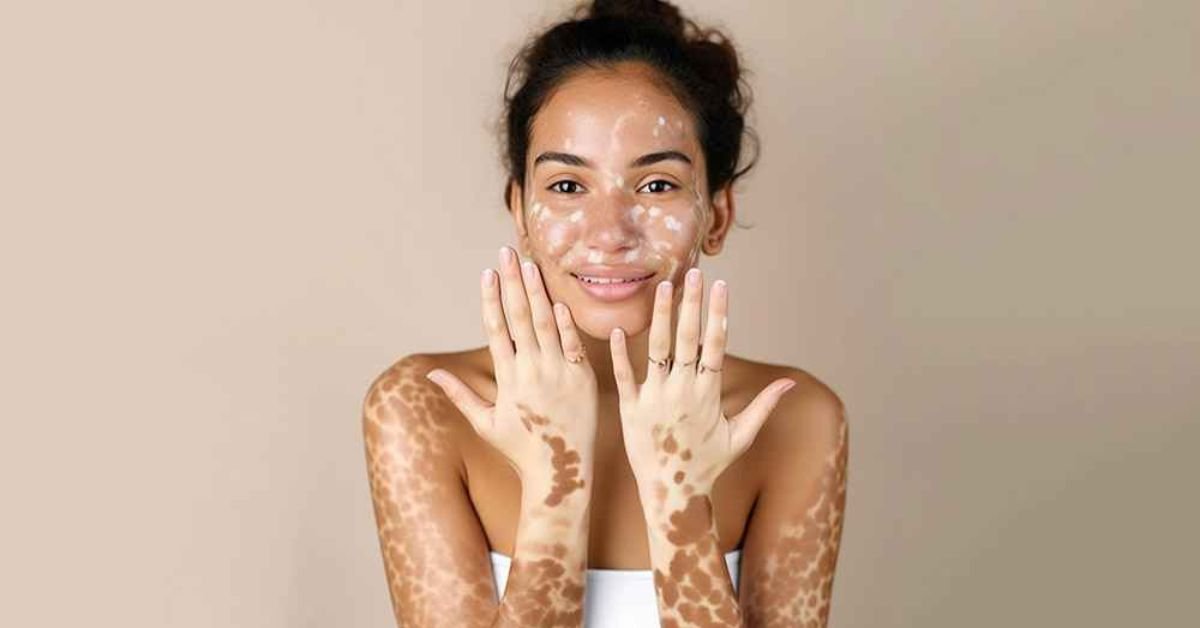Vitiligo is a long-term skin condition that affects millions of people worldwide. It causes the skin to lose its pigment in patches, leading to white or light spots on different parts of the body. While vitiligo is not life-threatening or contagious, it can have a major impact on self-esteem and quality of life.
Thankfully, there are several vitiligo treatment options available today, ranging from traditional therapies to the latest medical advancements. This article explores vitiligo treatment: effective options and latest solutions, providing guidance, hope, and clarity for those living with this condition.
What Is Vitiligo?
Before diving into vitiligo treatment, it’s important to understand what vitiligo is. Vitiligo occurs when the cells that produce melanin (the pigment that gives skin its colour) stop functioning or die. The exact cause is not fully understood, but autoimmune, genetic, and environmental factors are believed to play a role.
Key Facts About Vitiligo:
- Appears as white patches on the skin.
- Can affect any area, but is common on hands, face, and around body openings.
- May progress slowly or rapidly.
- Affects people of all skin types, but is more noticeable in those with darker skin.
Causes and Risk Factors
The main cause of vitiligo is the destruction or malfunction of melanocytes, the pigment-producing cells in the skin. Here are some factors linked to its development:
- Autoimmune response: The immune system mistakenly attacks healthy melanocytes.
- Genetics: Family history can increase risk.
- Environmental triggers: Sunburn, stress, or chemical exposure may play a role.
- Other conditions: People with autoimmune diseases (like thyroid issues or type 1 diabetes) have a higher risk.
Understanding these factors can guide the choice of the most effective vitiligo treatment for each individual.
Types of Vitiligo
Understanding the type of vitiligo helps determine the best vitiligo treatment options:
- Non-segmental Vitiligo: Most common. Patches appear symmetrically on both sides of the body.
- Segmental Vitiligo: Affects only one side or part of the body; often starts earlier and progresses for a year or two, then stabilises.
- Focal Vitiligo: Limited to a few areas.
- Universal Vitiligo: Affects almost all skin surfaces.
Goals of Vitiligo Treatment
Vitiligo treatments do not cure the disease, but they aim to:
- Restore lost skin colour (repigmentation)
- Stop or slow progression
- Improve appearance
- Boost self-confidence and quality of life
Treatment success varies from person to person, and sometimes a combination of therapies is required for the best outcome.
Medical Treatments for Vitiligo
Here are the main vitiligo treatment options used in medical practice:
1. Topical Corticosteroids
Topical corticosteroid creams are often the first line of defence for new or spreading patches. These creams can help bring back some colour if started early.
- How they work: Reduce inflammation and immune response in the affected area.
- Best for: Localised or small areas of vitiligo.
- Potential side effects: Thinning of skin, stretch marks, or acne with long-term use.
2. Topical Calcineurin Inhibitors
Medications such as tacrolimus or pimecrolimus are newer, steroid-free options, especially for the face and neck.
- How they work: Block immune responses that damage pigment cells.
- Best for: Sensitive skin areas or children.
- Potential side effects: Mild burning or irritation, rare cancer risk with long-term use.
3. Phototherapy (Light Therapy)
Narrowband UVB phototherapy is a highly effective, non-invasive vitiligo treatment for widespread or stubborn patches.
- How it works: Controlled exposure to UVB light stimulates melanocyte activity and skin repigmentation.
- Typical regimen: 2–3 sessions per week for several months.
- Success rates: Many see substantial improvement; results vary by skin type and vitiligo extent.
- Side effects: Sunburn, dryness, mild irritation.
Excimer laser therapy is another option for small, targeted areas, using a specific wavelength of UVB light.
4. Oral Medications
For rapidly spreading vitiligo, oral corticosteroids or immunosuppressants may be prescribed short-term to control the immune system. These are usually reserved for severe cases due to potential side effects.
5. Surgical Treatments
When vitiligo is stable (no new patches or changes for at least 6–12 months), surgical options may be considered, especially for small, stubborn patches:
- Skin grafting: Healthy, pigmented skin is transplanted to vitiligo patches.
- Blister grafting: Small blisters are created on pigmented skin and then transplanted.
- Cellular grafts: Melanocyte-rich cell suspensions are spread on affected areas.
Risks: Scarring, infection, uneven skin texture or colour.
6. Depigmentation Therapy
For those with extensive vitiligo (over 50% of the body), removing the remaining pigment may be an option for a more uniform look. This is done using topical agents like monobenzone.
- How it works: Gradually lightens unaffected skin to match depigmented patches.
- Considerations: Permanent, can cause irritation and increased sun sensitivity.
Latest Solutions and Advanced Therapies

In recent years, researchers have made exciting progress in vitiligo treatment. Here are some of the latest solutions:
1. JAK Inhibitors
Janus kinase (JAK) inhibitors such as ruxolitinib (topical) are new medications showing promise for restoring skin colour in people with vitiligo. These work by blocking immune pathways that lead to pigment loss.
- Status: FDA-approved for nonsegmental vitiligo (as of 2022) in adults and some teens.
- Benefits: Significant repigmentation in clinical trials, especially for facial vitiligo.
- Drawbacks: Expensive, not suitable for everyone, ongoing research into long-term effects.
2. Combination Therapies
Combining treatments (such as topical medications with phototherapy) often delivers better results than one therapy alone. Your dermatologist may recommend a custom combination plan.
3. Platelet-Rich Plasma (PRP)
PRP therapy, which uses a patient’s own blood platelets injected into the skin, is being explored as a way to stimulate melanocyte activity and boost the effectiveness of other vitiligo treatments.
4. Stem Cell Therapies
Research is ongoing into the use of stem cells to restore pigment cells in affected skin. This approach holds promise for the future but is not yet widely available.
Home Remedies and Self-Care
While medical options are the most effective, many people also explore natural or home-based methods for managing vitiligo:
1. Sun Protection
- Always use broad-spectrum sunscreen (SPF 30+). Vitiligo patches burn easily and are at higher risk for skin cancer.
- Wear protective clothing, hats, and sunglasses outdoors.
- Avoid tanning beds.
2. Cosmetic Cover-Ups
- Special camouflage creams and makeup can conceal white patches.
- Self-tanning lotions provide a temporary tan on lighter areas.
3. Healthy Diet
While no diet can cure vitiligo, eating foods rich in antioxidants, vitamins, and minerals (like fruits, vegetables, and whole grains) supports skin health and overall wellbeing.
4. Stress Management
Chronic stress may worsen vitiligo. Mindfulness, yoga, meditation, and counselling can be helpful tools.
5. Herbal and Alternative Remedies
Some people try herbal supplements (like ginkgo biloba or turmeric), but evidence for their effectiveness in vitiligo treatment is limited. Always consult your doctor before starting new supplements.
Living With Vitiligo: Emotional and Social Support
Vitiligo is more than a skin condition it affects emotional and social wellbeing. Here are tips for coping and thriving:
- Join support groups: Connecting with others living with vitiligo provides encouragement, tips, and a sense of belonging.
- See a counsellor: If you’re struggling with self-esteem or depression, a therapist can help.
- Educate others: Sharing information helps reduce stigma and misunderstanding.
- Focus on strengths: Your worth goes beyond your skin.
Remember, you are not alone. With the right vitiligo treatment and support, it’s possible to live confidently and happily.
Myths and Facts about Vitiligo Treatment
Myth: Vitiligo is contagious.
Fact: Vitiligo is not infectious and cannot be spread through contact.
Myth: Only people with dark skin get vitiligo.
Fact: Vitiligo affects people of all skin tones, but it’s more visible in those with darker skin.
Myth: There is a cure for vitiligo.
Fact: While there is no cure, many effective vitiligo treatments can help restore colour and manage the condition.
Myth: Diet alone can reverse vitiligo.
Fact: No diet cures vitiligo, but good nutrition supports skin health.
Comparing Vitiligo Treatment Options: Table Overview
| Treatment | Best For | Pros | Cons/Side Effects |
|---|---|---|---|
| Topical Corticosteroids | Small/localised patches | Easy to use, affordable | Skin thinning, not for long-term |
| Calcineurin Inhibitors | Sensitive areas/children | Steroid-free, safe for face | Mild burning, rare long-term risks |
| Phototherapy (UVB) | Widespread vitiligo | Effective, non-invasive | Requires clinic visits, mild burns |
| Excimer Laser | Small areas | Targeted, fewer sessions | Cost, availability |
| Oral Medications | Rapidly spreading vitiligo | Fast results in some cases | Serious side effects, short-term |
| Skin Grafting | Stable, small patches | Permanent, good for small areas | Scarring, infection risk |
| Depigmentation Therapy | Extensive vitiligo | Evens out skin tone | Permanent, irritation, sun risk |
| JAK Inhibitors | Nonsegmental, facial | New, effective in trials | Cost, long-term safety unknown |
| Cosmetic Cover-Up | All types | Quick confidence boost | Temporary, needs reapplying |
Practical Tips for Choosing the Right Vitiligo Treatment
- Consult a Dermatologist: Professional guidance ensures you get a safe, effective, personalised plan.
- Set Realistic Goals: Understand what each treatment can achieve.
- Consider Combination Therapy: Often, using more than one method works best.
- Monitor Progress: Keep a journal or take photos to track changes.
- Be Patient: Repigmentation takes time; stick with your plan.
Vitiligo and Quality of Life
While vitiligo can be challenging, many people find ways to embrace their unique skin or use creative approaches to feel confident. Awareness campaigns, celebrities sharing their stories, and support networks have all helped reduce stigma.
Remember:
- Your identity is not defined by your skin.
- Modern vitiligo treatments offer more options and hope than ever before.
- Confidence and self-acceptance are just as important as medical care.
The Future of Vitiligo Treatment
Ongoing research means the future is brighter for those living with vitiligo. New therapies, improved lasers, and advanced cell-based treatments are under development. As our understanding of the condition deepens, treatment will become even more personalised, safe, and effective.
FAQs:
1. Is there a permanent cure for vitiligo?
There is currently no cure for vitiligo, but many treatments can restore colour to the skin and stop or slow progression.
2. How soon will I see results from vitiligo treatment?
Results vary. Some people see changes in a few months, while others may need longer or a combination of therapies.
3. Is vitiligo treatment safe for children?
Certain treatments, like topical calcineurin inhibitors and light therapy, are safe for children. Always consult a dermatologist.
4. Can vitiligo come back after successful treatment?
Yes, vitiligo may recur even after successful repigmentation. Ongoing maintenance and follow-up are important.
5. Are there side effects to vitiligo treatments?
Some treatments have side effects, such as skin thinning (steroids), irritation (light therapy), or rare risks with new medications. Always follow your doctor’s advice.
6. Can lifestyle changes improve vitiligo?
Healthy lifestyle habits balanced diet, sun protection, stress management can support skin health, but don’t cure vitiligo.
7. What is the latest breakthrough in vitiligo treatment?
Topical JAK inhibitors like ruxolitinib represent a major advance, offering new hope for effective and lasting repigmentation.
Must Read:
Conclusion: Finding the Best Vitiligo Treatment for You
Vitiligo Treatment: Effective Options and Latest Solutions highlights a hopeful reality: while vitiligo can be persistent, a range of proven and innovative therapies are available. The right plan depends on your age, skin type, health history, and personal goals.
Consult a knowledgeable dermatologist, explore your options, and consider joining a support community. With patience and professional care, it’s possible to restore confidence, improve skin appearance, and live a full and joyful life with vitiligo.
Take the next step:
- Book an appointment with a dermatologist to discuss your best options.
- Stay informed about new breakthroughs.
- Reach out for support you’re never alone.

